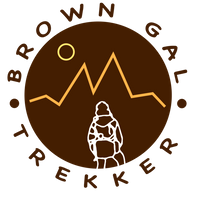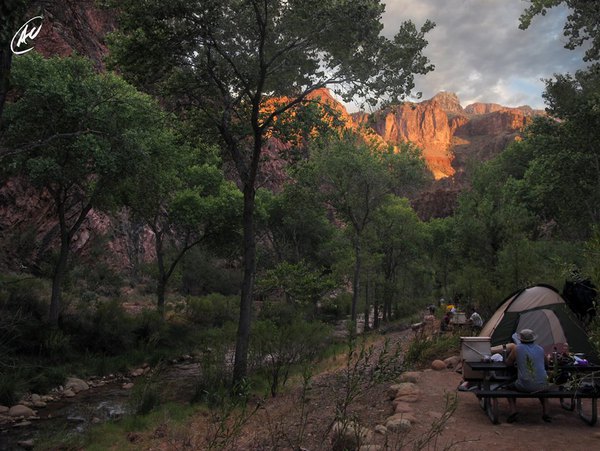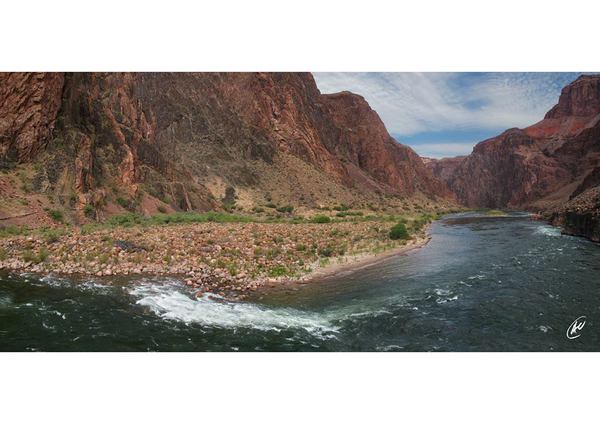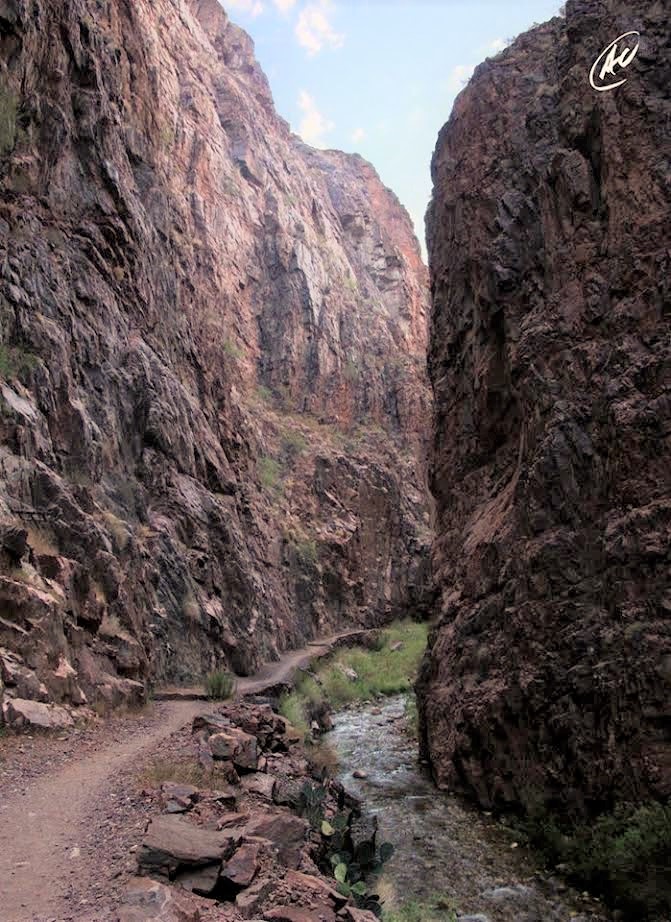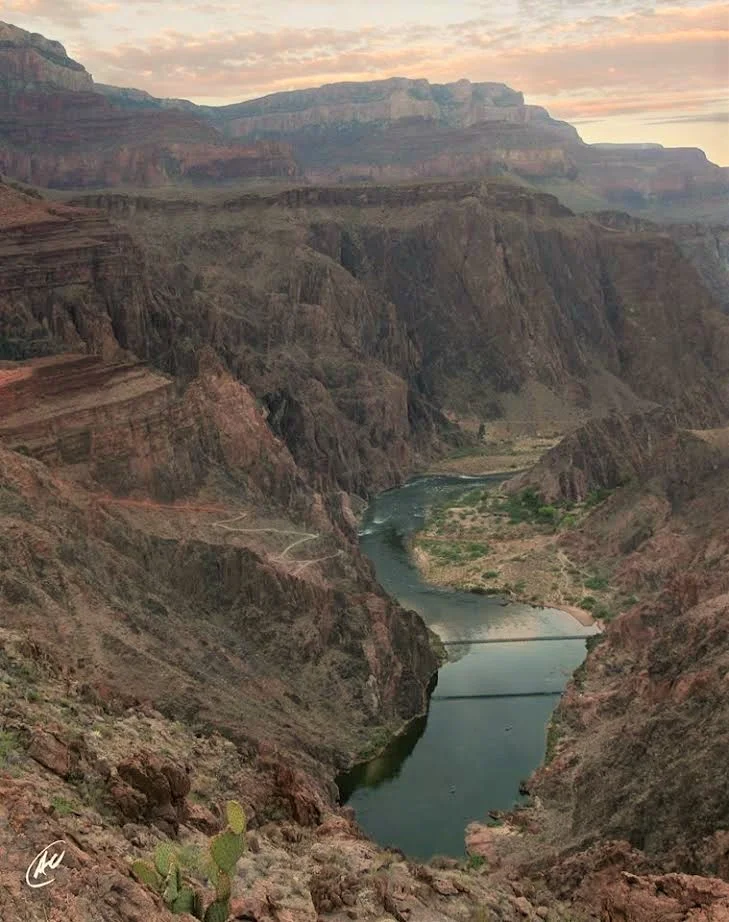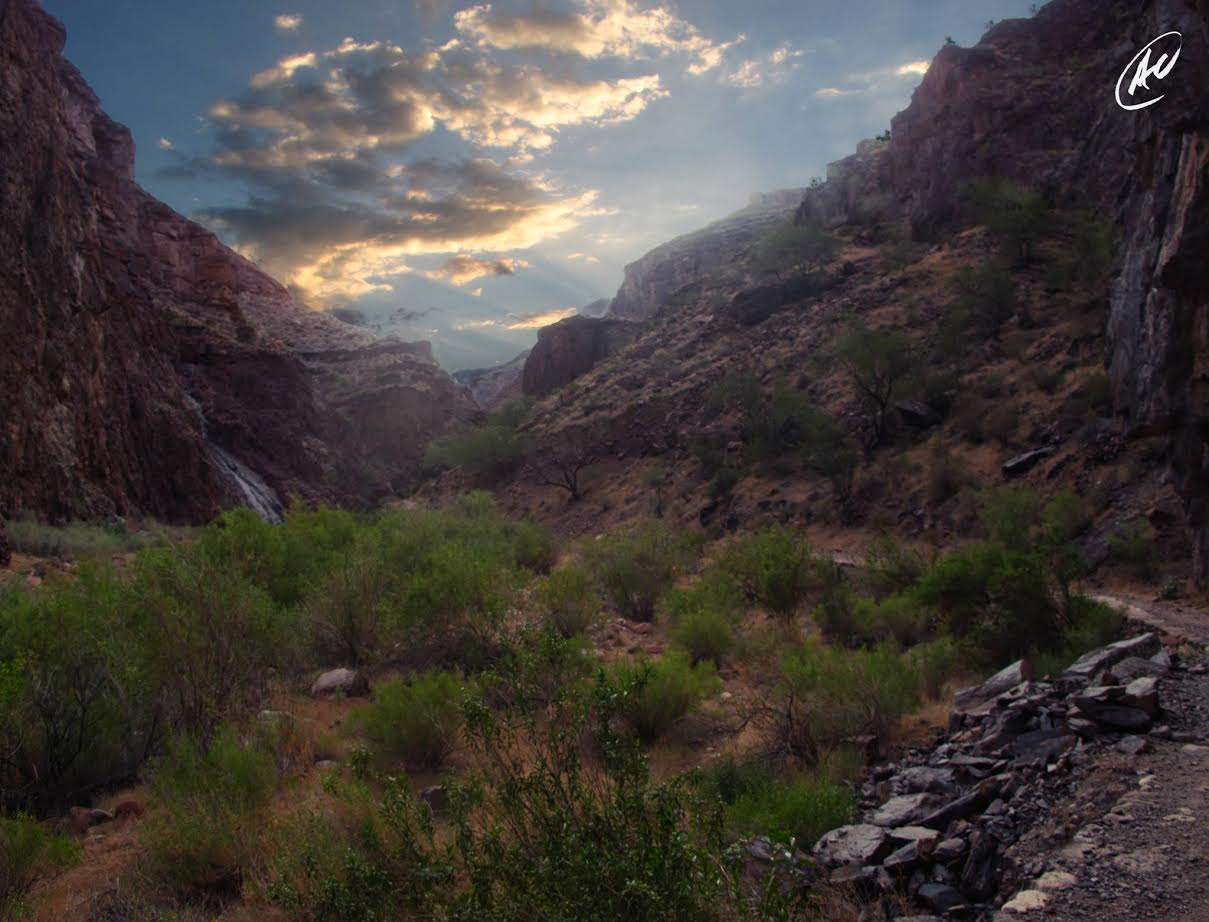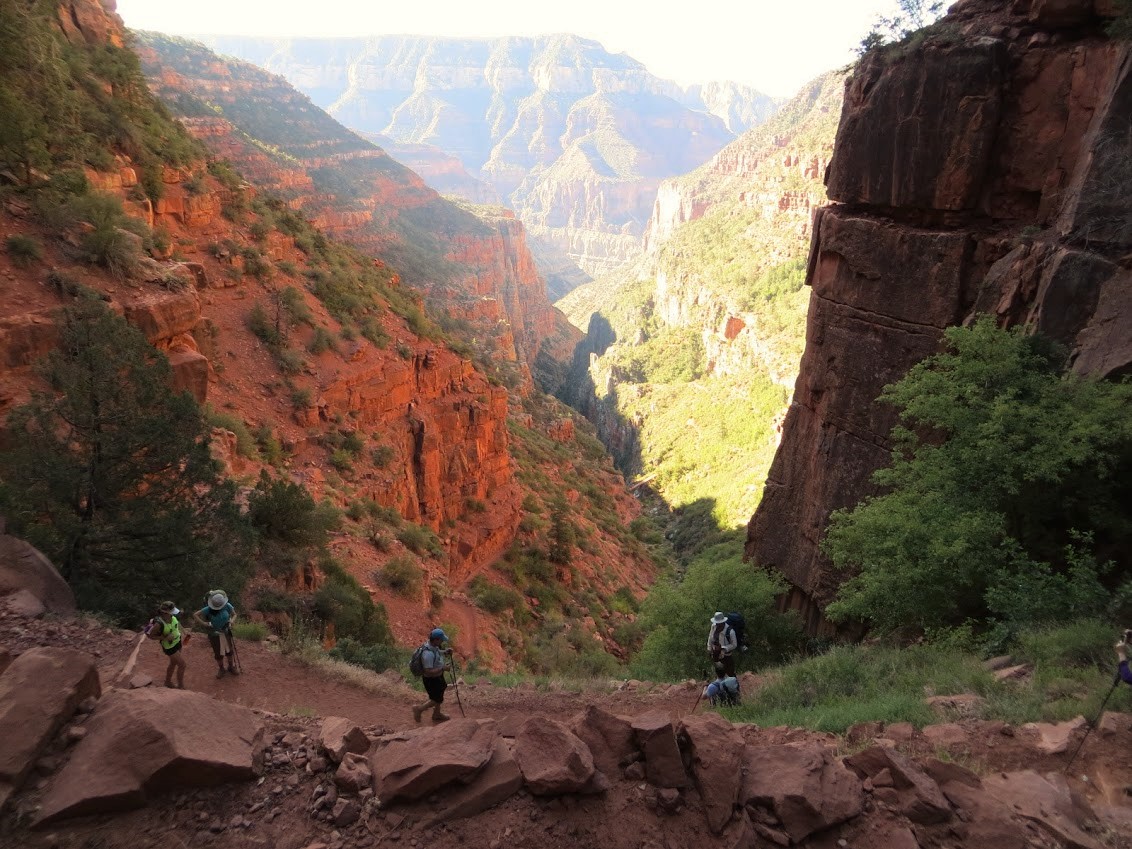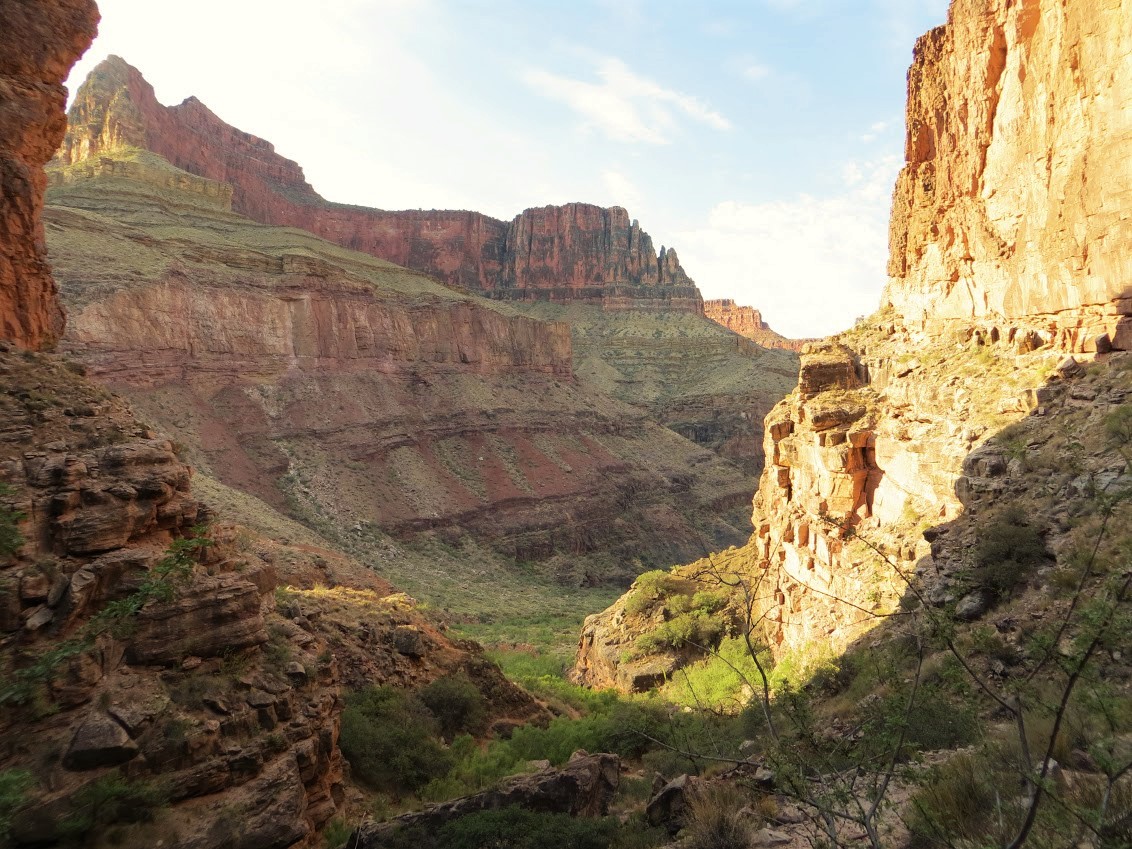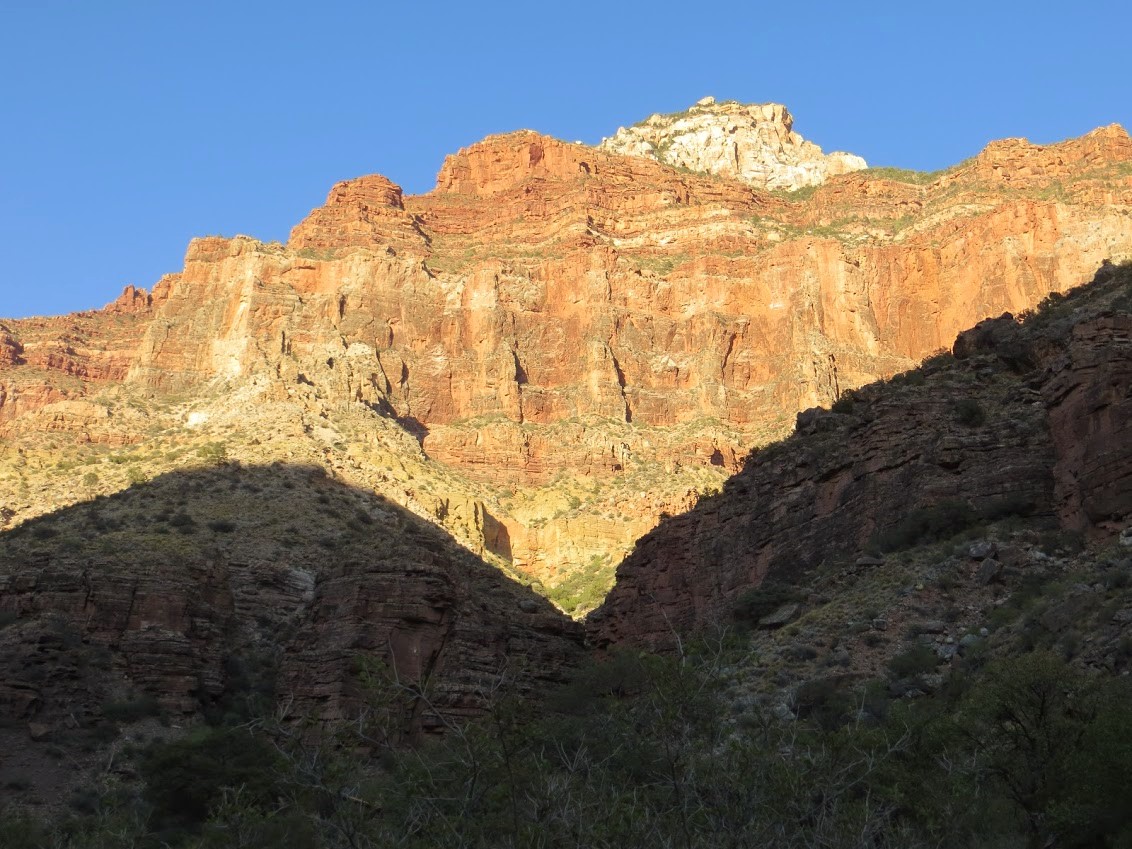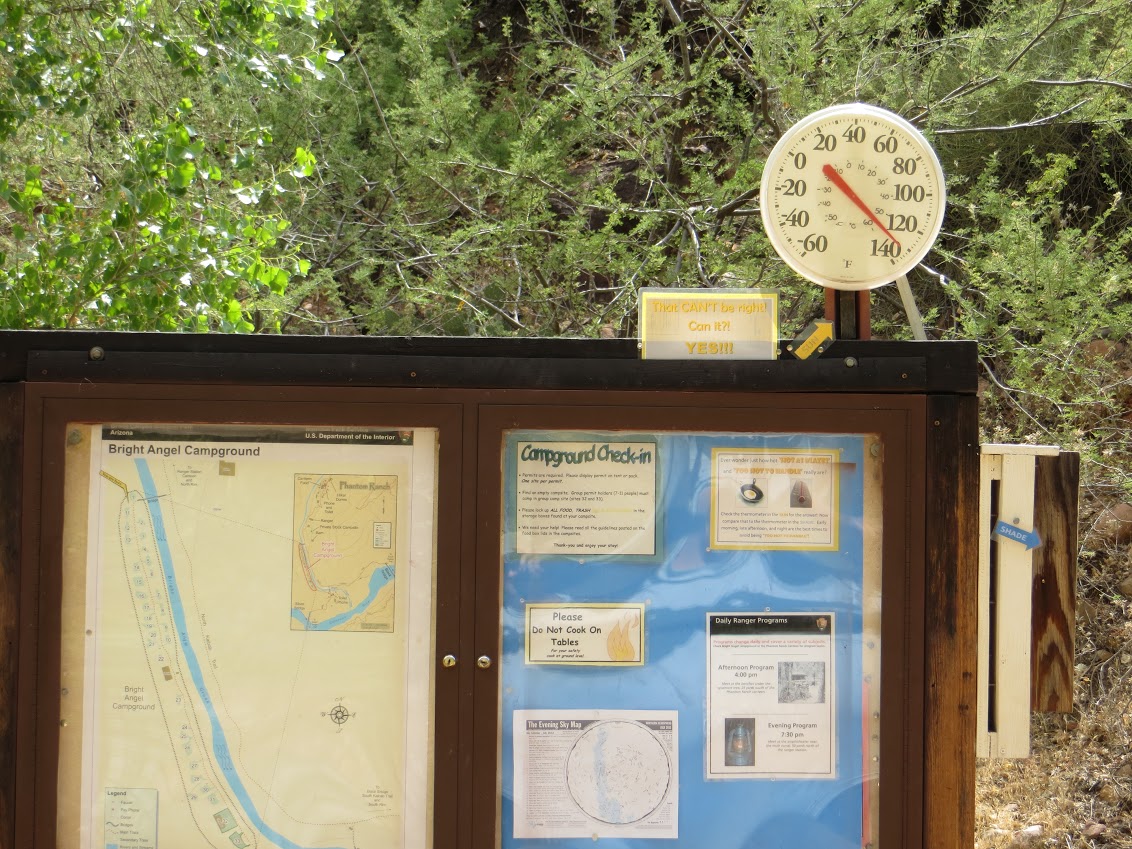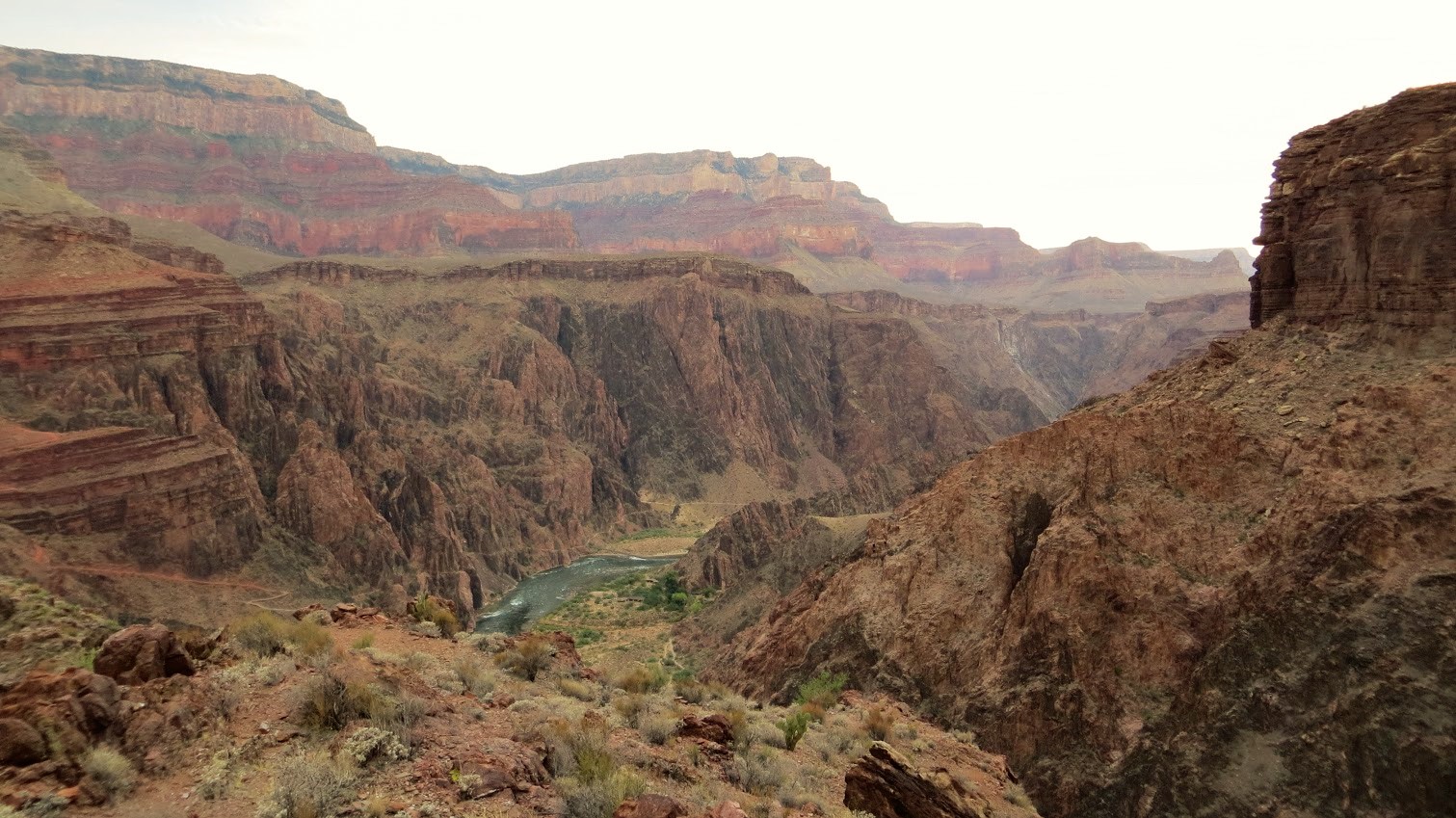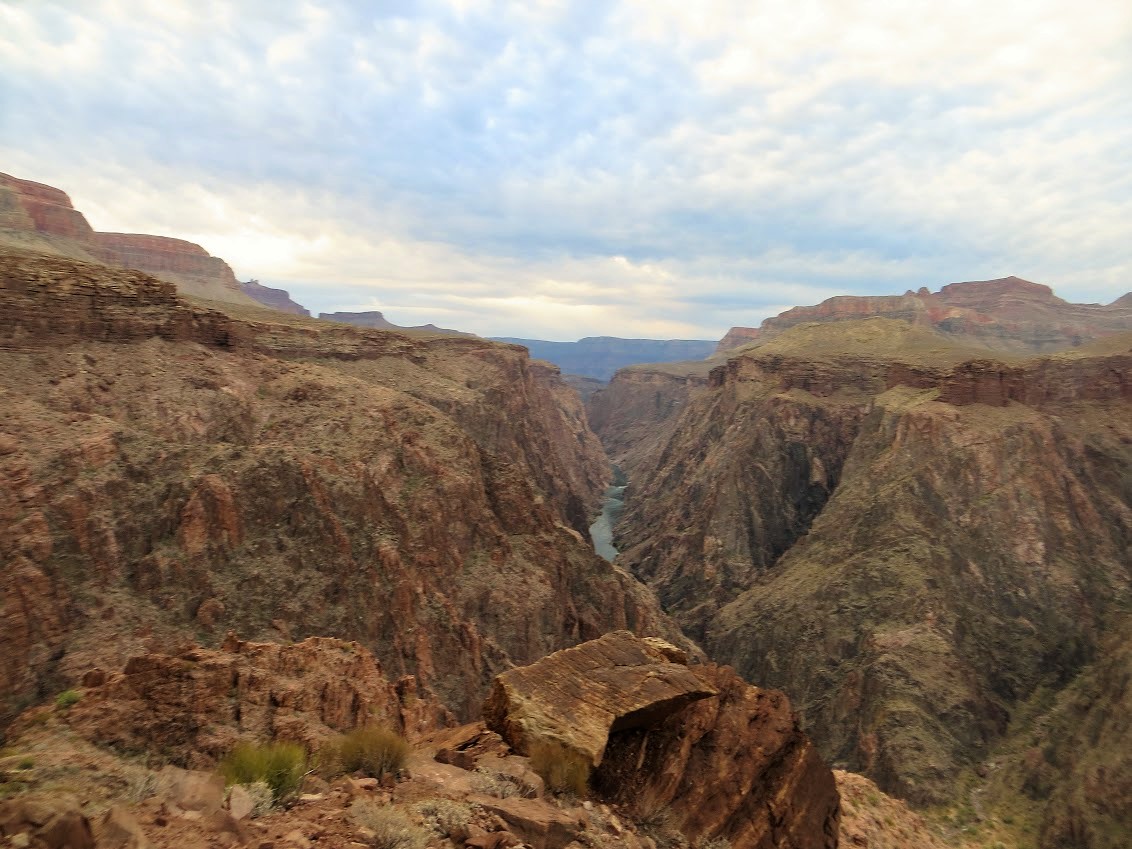The Grand Canyon Rim to Rim: Risking It All In The Heat
If there is a trek that has taught me well as a trekker, it would be the Grand Canyon Rim to Rim Trek. Sure, it’s a classic 4 day trek and every avid hiker wishes to experience the grandeur of this terrain but Grand Canyon can be a danger zone if you don’t properly prepare for the potential hazards that are inherent in the trek.
I learned the hard way and so did my trekking companions. As a trek leader, it was one experience that I will never forget for good reasons.
The plan was simple. As an organizer for meetup.com, a well-known social platform that allows people to organize events to meet and do activities, I intended to organize a classic itinerary of the rim to rim trek of the Grand Canyon. In our case, the plan was to start at the North side and finish at the South Side in a span of 4 days. The mileage was moderate in length with the first and fourth days requiring the group to work on the elevation loss and gain – a descent from the North Rim and the ascent to the top of the South Rim. A perfect short multi-day trek. The only issue was that I obtained permits for the late June-early July time frame. Hence, we were going to trek the Grand Canyon at the hottest time of the year!
Yet, despite the heat, a group of us ventured into this unique opportunity. We survived. At the same time, one of our members suffered heat exhaustion. This leads me to say to all those who are considering to trek this mighty landscape to keep in mind the potential hazards. If you can avoid the hottest time of the year which normally falls in July and August, do so. If you decide to go and battle the heat, then make sure to do all the necessary research to prepare yourself and to avoid heat exhaustion or heat stroke.
Of course, the experience we had and even the incident itself did not minimize the tremendous beauty of the Grand Canyon as the photos depict. In trekking the Grand Canyon, we experienced a rather unusual situation where one member of our group, John, suffered from heat exhaustion which occurred on the third day as we all hiked out of Phantom Ranch to proceed to our last campsite on the third night. During that time, John and Aaron, who volunteered to be our sweeper, unfortunately became separated from the group. In the end, we caught up with one another and were all ever so grateful for the safety of everyone and for the lessons learned. Below, Aaron shares the experience to remind us all about the inherent risks of trekking in the heat and the measures we can take when we find ourselves in the unfortunate situation of dealing with heat exhaustion.
(as narrated by Aaron)
The day before the onset of heat exhaustion.
Well, as the camera hog of the group, it's only natural that I was designated the sweeper out on the trail. So, by the time I got into Phantom Ranch that second day, I had never really caught on all that day as to how Johns was holding up during our hike into Bright Angel camp. I had no idea during the hike if he was having any issues or managing just fine. I just know that I was the last person in line throughout that day's hike and nobody lagged behind enough to be swept up. Probably the first real sign that caught my attention was how John was doing once the temperatures started to cool down. Getting into Phantom Ranch just before noon, the campsite thermometer had already reached some 130F! Most of the crowd waited out the afternoon sauna inside the dining hall while others welcomed the dry heat by taking turns napping in Bright Angel Creek.
Once the evening started to creep over, I did notice that John seemed a bit lower key than others in taking advantage of the cooler air. He didn't speak or add to the conversation much and his gait didn't have the same 'bounce' that most of us still carried. Back at camp, I remember asking him if he had yet much to eat and his response didn't demonstrate much enthusiasm at the idea. The apparent apathy for food and his lethargic demeanor that evening were clear signs that his body hadn't managed that day's hike and the camp's subsequent dry heat as well as it should have been. While some of us were contemplating a quick morning hike overlooking camp, I suggested he take the rest of the evening easy, eat as much as he could tolerate before turning in, and sleep in the next morning while some us caught the sunrise. I was sure through some food and sleep that he'd recover well enough to make the hike out the next day and manage the shorter albeit uphill trek to Indian Gardens Campground.
It was a rough night for most of the group, trying to comfortably sleep through 100+F heat with barely a breeze to console us. After getting back into camp from a spectacular sunrise hike, it was nice to see John already breaking camp. He was moving a bit slow but that was understandable; it took most of us a bit of extra effort to really get in gear. But John's disposition did seem to have a bit more pep than the previous evening. He expressed some confidence in the day's hike out in front of us. And he did say that he already had some breakfast, though I didn't press him for any details.
Heat exhaustion. Noticing the symptoms.
As the group hiked out of camp, John was out there in line somewhere. I, per usual, hung around until everybody was well on their way out and brought up the back of the pack. Hiking out of Bright Angel Campground, it’s about a mile crossing over and then hugging west along the Colorado River before getting to Pipe Creek, the point of the trek that distinctly signals the start of the climb up towards the South Rim. Pipe Creek as it drains downward into the Colorado includes a section aptly named the Devil's Corkscrew, about another mile or so up from the river.
It was barely a few hundred yards up Pipe Creek though that I spotted John up ahead taking the climb at a noticeably slower and more deliberate pace than everybody else out on the trail. Barely a quarter of the way to Indian Gardens with plenty of incline still ahead, I found his lack of progress concerning. His pace had become slow and deliberate with frequent rest breaks.
I eventually caught up with him. He was sweating profusely, which was not necessarily a bad sign. I asked him how he was holding up and what he was thinking. He admittedly expressed how surprised he was to have so much trouble from yesterday through this morning. I assured him to just take his time, pointing out the lower mileage for that day, and that I would be with him for the rest of the day.
The thing with heat exhaustion is that it can strike a person practically on the spot in mid-activity or take over a person through a length of time as that person may go through periodic waves of strenuous activity. Fortunately for John, it was more the latter. He was noticeably less energetic that evening at Bright Angel, appearing to easily tire with basic physical activity such as walking back-forth between camp and Phantom Ranch while the rest of us had obviously completely recovered from that day's hike into camp. And he exhibited not just a lack of an appetite but an apparent aversion to just the very thought of food. Generally, he had an apathetic manner about himself, based mostly out of fatigue. The less warm air that overnight (one could barely call it 'cooler') plus time off his feet seemed to do him some good come the following morning.
It can only get worse before it gets better.
I let John know that we would spend the rest of our hike together and that the pace would be dictated by how he was feeling, noting that although the climb up to Indian Gardens was significant the mileage was shorter than the previous day’s and there was plenty of daylight ahead.
Unfortunately, after a short while, it soon became clear that John's exertion was causing more harm than it was safely worth for him. His rest breaks eventually turned into seats of him bent over between his legs. He was using his hiking poles more to maintain his balance than to purposefully push himself forward. And most concerning is that he started to slur his speech and became unable to string together coherent thoughts when I engaged with him. His physical grind had been apparent for a while but his mental status was starting to fail him as well.
My hike out of Bright Angel camp to the point of meeting up with John probably took about an hour, give or take. The hike back with John took several hours, partly by design as well as necessity. The most important thing was to take our time. As much as possible, I wanted to minimize the physical exertion it took him to make it back into camp, not too concerned with how long it would take us. This included multiple catnaps, transferring much of his backpack weight onto myself to carry, and taking advantage of any seats in the shade from the sun as we came across them.
Along the way, I encouraged hydration (he refused to eat) and regularly saturated his body with water, all to allow his body to control its core temperature. I also tried to regularly engage with him, whether by conversation or just by occasionally holding his shoulder or arm. I offered encouragement but I was hoping that just the physical interaction itself could help him stay focused and determined.
John and I spent a second night at Bright Angel camp, giving him a full afternoon and evening of physical recovery as well an opportunity to nutritiously replenish his body. I suspect that he didn’t eat well that previous evening after hiking into Bright Angel and whatever meals/snacks he had the next morning was lost out on the trail.
Once back in camp, he was physically and mentally spent. The rest of the day saw him recover well, though, especially once we periodically settled down for a while to recover, alternating between the cool dining hall, dipping in the nearby creek, and relaxing in camp. He was still obviously very fatigued and not at all motivated to do anything all that day. But slowly he became more mentally alert and aware, forced himself to snack and eat what he could stomach a bit more each time (and kept it down), and eventually able to manage himself on his own feet with little concern. By the end of that evening, he seemed more like he was early that morning when he was breaking camp.
After assisting John back to Bright Angel Camp and assuring he was stable enough to rest up on his own, I sought out the on-duty ranger for advice. It was through his radio that I was eventually able to contact the rest of the group after they had made it to Indian Gardens CG. After that, John and I were pretty much on our own until we could meet the group back at the North Rim the next day, which was a bit of an adventure in itself. Fortunately, once back at the North Rim, I could call them from the North Rim Lodge and arrange a pick up.
That evening went relatively well. In a few hours’ time after getting back into camp, John recovered well enough to walk around with little issue, although still in no hurry, and eventually could tolerate eating some food. John’s night ended fairly early as I can’t recall if he even stayed up much past sunset.
The game plan.
After I chatted with the ranger that day and then conferred with John that evening, we decided to push for a pre-sunrise hike out the next morning. Partly to help beat most of the hot weather (especially when considering The Box) and partly to give us enough time to safely cover the 14miles to the North Rim. I encouraged John to eat a full dinner so we could break camp as quickly as possible and take in our breakfast on foot.
Options in hiking out of Bright Angel camp were pretty limited. Direct NPS assistance was only available in immediate life-threatening situations, which did not apply to John by the time he ably recovered. And the South Rim route was not practicable, as even John admitted he doubted he could make the steep climb in the day’s heat, especially considering we’d have to catch the day shuttle back to the North Rim by a particular time. Heading back north was our only real option.
The most appealing factor in hiking out to the North Rim was that the group would be there waiting for us. I was confident that John could handle the relatively even hike through Cottonwood camp with little problem. And I felt that if he could at least get through half of the climb up the North Rim from Cottonwood then at least I could get some help to carry him up the rest of the way, if necessary.
Also, I felt like there would be more available water sources along the hike out the north side. That would allow us to carry a bit less and the easier access would allow me to treat any symptoms of heat exhaustion, if necessary.
The exit out and hike back to civilization.
The morning hiking out of Bright Angel found both John and I a bit slow. We decided to break camp well before sunrise to beat the heat and cover some 14 miles to the North Rim before sundown as soon as possible. But we got going soon enough. And John physically seemed in much better shape than the previous 36 hours, complimenting my sense of urgency to get through the first half of the day’s mileage with a quick pace.
We didn’t spare much time that morning preparing for the day’s hike. The most pressing need was to get out on the trail as soon as possible. So, we didn’t bother with a full breakfast, opting instead for a full dinner the night before and just snacking on our breakfast while on foot. We quickly reviewed the day’s plan and options at hand if/when he reaches the point he can no longer continue.
The hike out of Bright Angel camp was pretty straight forward, even somewhat businesslike. With me taking up the tail end, we pushed the trek to Cottonwood as fast as John felt he could take it. We only took breaks to occasionally snack on some food and sip our water. I wanted to get through that part of the day before the heat really bared on us and also so that we could save as much daylight as possible for the actual hike up the North Rim. I figured that John wouldn’t appreciate getting stuck hiking up the North Rim in the cooler air much more than hiking up the South Rim in the day’s heat. Once at Cottonwood, we both napped a bit and took our time to recover under some shade. Even if a bit slow and tired, John was doing well enough to take in a full lunch and still exhibited some urgency upon hiking out of camp.
Back on the trail, I’m sure I got on John’s nerves as I constantly bugged him to regularly snack and drink. A short while past Cottonwood, the trail profile noticeably steepens and John’s hike started to significantly slow down. I tried to play with him a bit by making a deal in that every time we took a rest break he had to nimble on a snack bar. That lasted a short while. As we continued the climb, John struggled to keep moving forward. I took on as much of his heavy gear as I could handle myself. Rest breaks became more often. Fortunately, that day’s heat didn’t seem as intense as earlier in the trip. But battling up through the sharp switchbacks just before the Supai Tunnel, it became clear that he wasn’t going to clear the North Rim before dark. He was physically hitting the wall hard and pushing him through the trail in the dark by myself wouldn’t be safe. John and I made it to Supai Tunnel some 1.5miles short of the North Rim about an hour or so before sunset. I can’t recall the exact time I hiked over the rim but it was well over an hour past sunset.
Upon reaching the Supai Tunnel, I told John that he should keep a temporary camp while I hiked up the North Rim and reached the group for assistance. I set him up as best as possible to preserve his energy and body heat before hiking out on my own. Dusk was just settling in when I left and so it was completely dark soon enough before making it out on top. I was able to hitchhike to the North Rim lodge to call the group over for assistance.
It's a mental, as well as, a physical challenge.
Any challenges early on for that day’s hike was not unlike what one would expect for any other typical day hiking out of the Grand Canyon. Time above all else was a concerning factor. We wanted to get through past Cottonwood the sooner the better so the day’s heat would be less of a factor. And we wanted to get up the North Rim with as much daylight and warmth as possible still available left to us. And, of course, the relentless climb up the North Rim would be a challenge. That made getting past Cottonwood as early as possible even more important since we knew the climb up would likely be a slower than usual ascent.
John’s particular challenge was more about his body’s ability to physically complete the day’s hike. Although his day started in much better shape than the previous day and a half, I knew his body could replenish only so much of its energy reserve in such limited time to recover. That became apparent with us still a few miles short of the North Rim. And with his body battling the climb, his appetite again turned very defunct. Any food outside the occasional sip of water became intolerable.
The end of John's hike presented a couple challenges, one of keeping him warm while I hiked out by myself and brought back some assistance and then the actual hike out to get in touch of my group for some assistance. Up along the North Rim, the temperature dropped quickly as the sun hid behind the canyon walls and John’s body could get in trouble from hypothermia after working itself so hard the past couple days.
Addressing and alleviating John's symptoms.
We managed our time as best as we could by getting out of Bright Angel before sunrise, pushing the day’s early pace as much as John could take it, and rewarding ourselves with a good rest break and meal at Cottonwood camp. And then just took whatever time necessary for John to make it up the North Rim as far as he could.
Knowing John’s body would be near its physical end the closer to the North Rim we hike, I did my best to get John to regularly snack and feed his body through the day’s hike, to the point I’m sure he picked up his pace just to stay away from me.
Making camp at the Supai Tunnel, I did my best to assure John could maintain his body warmth while waiting for me to bring back some assistance. I had him sit on a sleeping pad atop of a large rock while I cooked him a small meal and covered him in a reflective blanket as he ate it. Before leaving, I laid out a sleeping bag for him, gave him a Nalgene of hot water and told him to sip it slowly and encouraged him to snack on some bars with it.
John's determination to beat the heat from an observer's standpoint.
Considering what John went through that evening at Bright Angel camp through the following day up Pipe Creek and recovering afterwards, John did fairly well. He fully trusted my guidance and understood the situation we were in at every major step of the way back to the North Rim. His motivation level on the return hike to the North Rim was very high. Upon reviewing our plan the preceding evening, he clearly understood how difficult this hike back could be for him and exhibited confidence in making it out fine as long as we managed the hike and time efficiently. That morning we maintained a good steady pace upon leaving Bright Angel all the way through just past Cottonwood. Naturally, as the climb progressively became a challenge for him and his body couldn’t help but give out on him, his motivation level dipped significantly. His hike for some two-thirds of the way was strong and steady. But the last five or so miles saw the trail start its climb up the rim and John’s body eventually worn down too much to finish out the trail.
As I noted earlier, John was just physically depleted by the time we got to Supai Tunnel but he never really lost his mental state. As fatigued as he was, he was still obviously aware of his situation and was responsive whenever I engaged with him. Otherwise, I would’ve opted to not leave him and wait out the hike until the next day.
Motivating John was not easy. Fortunately, while the hike up the North Rim may have been physically too much for him, he was still able to stay mentally sharp. So, the dwindling chances of him coming out on top the rim became pretty obvious to both of us as he continued to struggle up the climb. One motivating factor I was able to use was when the Supai Tunnel became within striking distance. Knowing it would be a camping spot for him while I hiked out for some assistance, we used that fact to motivate him to at least make it up there.
The availability of outside help.
Out on the trail, many hikers passing by John and I offered plenty of advice. But once we got back to Bright Angel, the ranger was very helpful with some medical guidance, establishing communication with Indian Gardens to contact the group, and pointing out our limited options for the next couple days.
Upon hiking out of the North Rim and calling my group for assistance, my hiking buddies helped me pick up John and assist him up the final leg of the hike, as well as carry out our backpacking stash.
The lessons learned.
Experience helps, whether it is for yourself or in order to help others. Fortunately, I had hiked that route a few years earlier and was familiar enough of the route to make some rational decisions, like choosing to hike back out the north side instead of trying to continue through the south side.
The most obvious answer is just to honestly judge your physical hiking capability. The R2R hike is not impossible and is very doable. But it is a physical challenge that very few day hikers have ever experienced, especially when considering the desert weather climate in the middle of the summer.
It is always a good idea to take on such challenging routes for the first time with somebody else or even a group, especially with somebody/a group with experience in that type of hike. Basic first aid/back country knowledge and common sense is invaluable for any type of hike. Always review and be aware of it.
As the person who's handling the crisis, I was pretty fortunate as far as potential emergencies go. That assistance was always fairly nearby whenever I figured we would need it most gave me no reason to lose my composure or to panic. Losing one’s composure is probably the worst way to handle any emergency. As easy as it to just say, stay cool and calm. Making the decisions while distressed about the situation hardly helps.
In closing, the best means to avoid an unfortunate circumstance is to be prepared. You can find valuable tips here for wilderness backpacking and here for traveling. I would add as a group, it is prudent to research the means of communication in the event of an emergency, whether via radio or walkie talkie, cell phones, via ranger assisted means or hiking together closely. Make sure to be aware of the means of assistance available through the park and the exit points along the trail.
Thanks Aaron for such a thorough overview of the experience and insight as to how to manage an unexpected crisis on the trail. You're one hell of a sweeper extraordinaire!
Photo credits: Aaron Crawford & Ian Macurdy.
